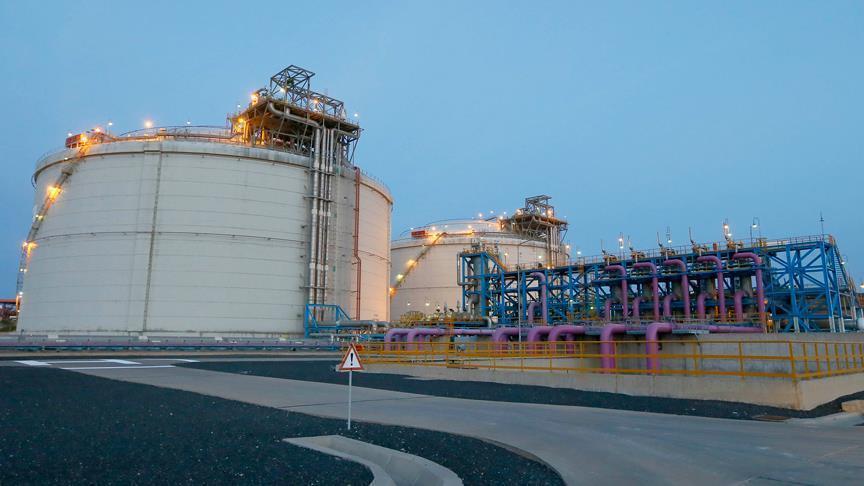- The Writer holds an MSc in Eurasian Political Economy & Energy from King’s College London and also an MA in European Studies from Sabancı University.
LNG first made inroads into the gas market from the 1970’s onwards to offer an alternative natural gas source in Japan, South Korea Taiwan. Since then, LNG has grown from a niche, high-cost market to a more affordable supply source. Although its global share increased at a modest level, the number of countries using LNG in recent years has grown exponentially.
Traditionally, most LNG demand came from Asian countries, but from as early as 2000, Europe’s LNG imports began to consistently increase. In the 2000’s with the commencement of U.S. LNG exports along with the availability of larger LNG volumes from the Middle East, the LNG industry grew while its pricing mechanism was also impacted.
This effect was felt with the emergence of LNG’s increased prominence against pipeline gas and was much-discussed in energy circles. The entry of LNG to the market has impacted costs, and its pricing mechanism to varying degrees around the globe and debates ensued on whether oil indexation versus a market-based pricing mechanism was best for the global market.
Despite the center stage that LNG managed to secure, its pricing mechanism was formed and based on oil indexation rather than hub pricing. Nonetheless, recent developments in the industry have paved the way for the greater role of gas portfolio players and LNG traders in shaping the future of the gas industry.
Over the last three decades, market pricing and hub pricing have successfully evolved in North America, the U.K., and in continental West Europe. As supply and demand dynamics have forged pricing, the market has seen that hub prices stayed lower compared to oil-indexed pricing. This fact alone has encouraged LNG consumer countries to aspire to trade based on hub pricing.
With increased competition in the global LNG market, the number of long-term contracts, which were once indexed to volatile oil prices, will now be forced to be indexed to spot prices.
The availability of LNG for sale through medium to short-term contracts is a major tool for companies seeking price arbitrage, and therefore, it has become a key business model both for LNG traders and portfolio players. Portfolio players in this context refer to large, major international oil and gas companies that have long-term LNG contracts as well as buyers for short-term and medium-term LNG supplies. On the other hand, LNG traders focus on short-term contracts with the aim of deriving profit margins from contract flexibility.
Short-term contracts are the lifeblood for LNG traders and portfolio players. Through short-term hub-based trade, consumers were offered more competitive pricing and this form of trade became an important element in opening up market liberalization in the U.S., the U.K. and in Western Europe’s gas markets. A greater number of destination-flexible LNG contracts allowed LNG traders and portfolio players to trade significant volumes in the short to medium term.
The LNG business has also evolved through the introduction of portfolio modeling. With portfolio players and LNG traders who can offer destination flexible options, U.S. export projects are set to expand thus promising to fundamentally alter the LNG business model over the next few decades. Nonetheless, although the market has gained considerable power and sophistication in recent years through trading over short-term contracts, portfolio players LNG traders, under the current market environment, have come under great pressure as LNG profit margins are becoming slimmer with escalating costs.
Before the LNG price spike in mid-2014, long-term marginal costs ranged between $8 and $11 per one million British Thermal Units, a range that was considered a necessity to cover supply chain costs. However, since mid-2014, this pricing level has been impossible to attain. Even after the gas glut with exponential gas production from the U.S. and Australia, lower prices could not be attained at the required break-even margin. Only after the 2020’s will the LNG market become rebalanced to offer better pricing to LNG consumer countries.
As the global LNG market became more flexible, the volume of spot and short-term contracts sold around the globe also increased, reaching approximately one-fourth of global gas trade as of 2015, according to figures from the International Group of Liquefied Natural Gas Importers. It is widely estimated that once U.S. LNG export projects become fully functional after 2020’s, the impact on short-term and hub pricing will become more significant, forcing major global gas players to adapt to the hub price mechanism.
Consumers lost their appeal for oil-indexed LNG contract sales as early as the 1980’s in the U.S, the 1990’s in the U.K., and in the 2000’s in West Europe.
When looking at the recently signed major LNG contracts, it is only major Mediterranean gas consumers that have signed oil-indexed contracts, which risk paying higher prices compared to other European hub pricing consumers.
The lucrative prospects for a well-developed Asian LNG market will be further enhanced through the application of North Western hub prices run by the Title Transfer Facility (TTF) and the National Balancing Point (NBP) Virtual Trading Point in the region. As LNG market fundamentals change over time, the U.S., with its relatively advantageous cost base and lower cost project execution, will be able to develop the next wave of LNG projects in the country towards a stronger liquid market. The profit-motivated LNG traders and portfolio players will encourage major LNG consumers to adapt hub-pricing mechanism by offering more competitively priced LNG than the riskier oil-indexed contracts.
- Opinions expressed in this piece are the author’s own and do not necessarily reflect Anadolu Agency's editorial policy.


